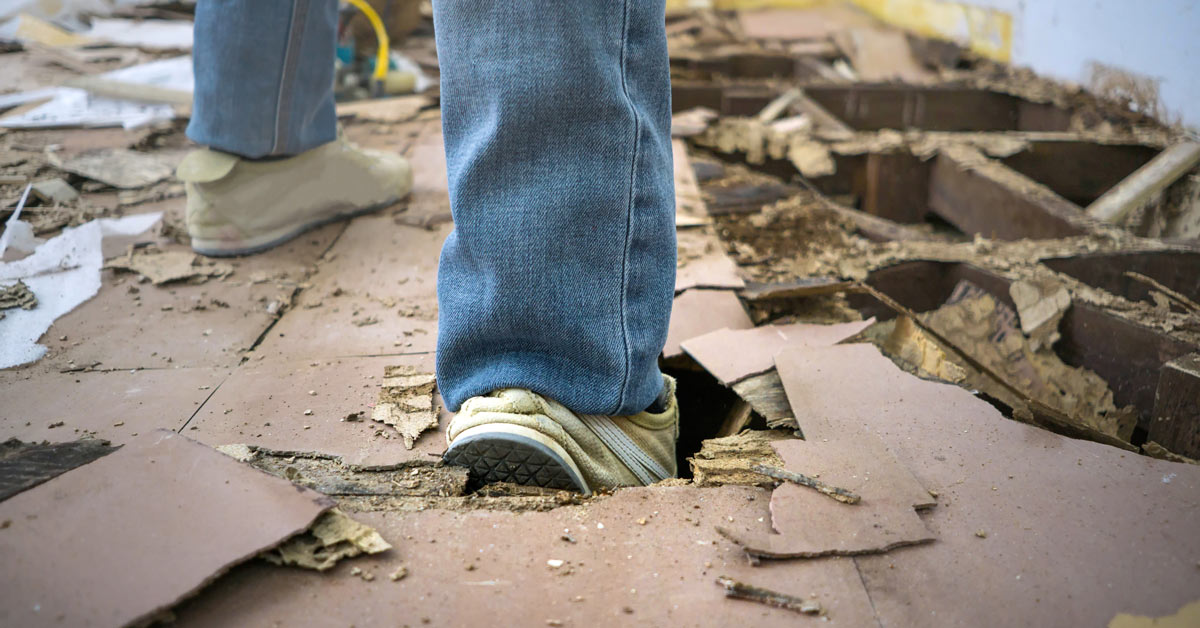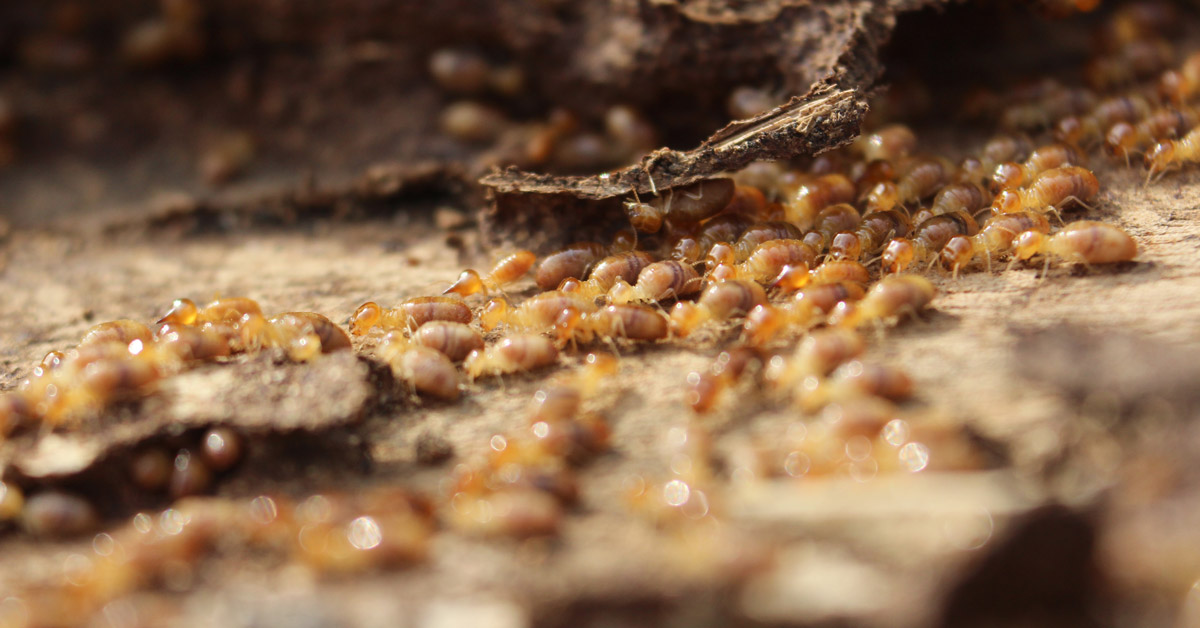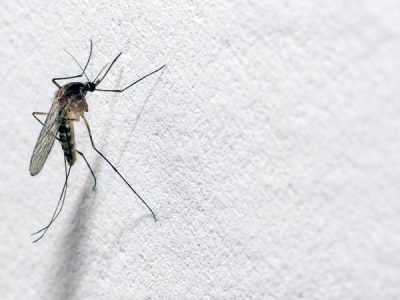Many people don’t realise they have a termite infestation in their home until permanent damage has been done. Their presence may go undetected until a foot goes through a disintegrating floorboard, or the vacuum smashes into weak skirting along the walls.
But despite the hidden, nocturnal nature of termites, there are many ways you can keep an eye and ear out for them before their behaviour gets completely out of hand. Aside from locking in annual pest inspections for your home (which is especially important if you live in areas with high termite activity, such as Queensland), you can also stay vigilant by looking out for certain telltale signs of their existence in your house. Here’s how to tell if you have drywood termites, and what you should do if you suspect they’re eating your home!

Signs of termite activity in your house
Listen out for…
The sound of clicking or tapping coming from the inside of your walls. This is most likely to occur at night when the house is quiet, and termites are active.
Hollow walls. If you tap on a wall, and it sounds hollow inside where it should be solid, this is a telltale sign that termites have been hard at work eating the timber inside!
Look out for…
Flying termites, called swarmers. This is the first indicator that termites could become an issue for your home. Flying termites tend to swarm after rainfall, particularly when it’s humid. This makes Spring and Summer the most at-risk termite season. If you can detect them in this state, you may be able to prevent an infestation from occurring!
Discarded termite wings gathered around window sills and door frames. This sign means trouble! Termites shed their wings when they have found a mate, indicating that they have already burrowed into your house and are trying to produce a colony with their new partner!
A buildup of frass. Frass is termite droppings, which they push out of their nests, accumulating to form a dark, powdery mound.
Keep your nose sensitive to the smell of…
Rotting timber or mould and mildew. Termites produce moisture when eating and tunnelling, and this can cause wood to rot and warp. It can also result in swollen door jambs and window frames. So if you’re finding it difficult to open and shut windows, it could be due to termites also!

What to do if you think you have termites
If you have discovered a number of these signs around your home, it’s vital to act quickly. And most importantly, do not disturb the termites as this could lead to them sealing up tunnels and moving elsewhere in your house, causing more extensive destruction.
Make an appointment for a professional termite exterminator to come and inspect your house ASAP. They will often use technological termite detection devices such as radar systems, thermal imaging devices and videoscopes to confirm termite activity. These devices allow termite technicians to search for termites in a non-intrusive manner (they won’t be knocking down any walls yet!). It will enable them to see where the infestations are occurring, the breed of termite in question, and how to best get rid of them.
What to look for in a termite control company
When choosing a termite control company to carry out a treatment plan on your home, it’s essential that you also consider long-term termite preventative measures, after the initial extermination has taken place. Ridding your property of termites is just the first step in the process of banishing them for good. Ensure that you choose a pest control company that focuses heavily on preventing further infestations by providing a termite management system for your house and yard, including landscaping advice and termite treatment zones. A company that can also provide you with termite insurance will give you better peace of mind for the future!
Want to prevent your home from a termite attack? Contact Cure All Pest Control today to discuss preventative termite control!



